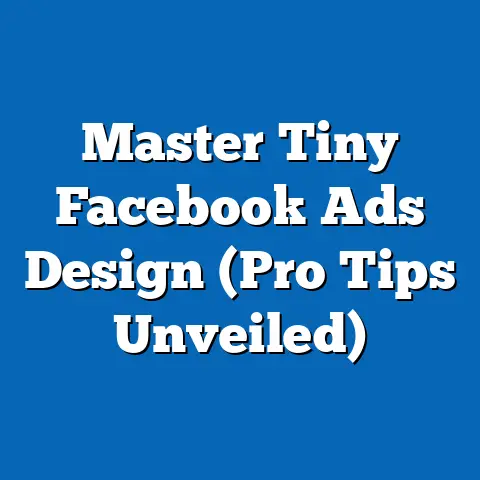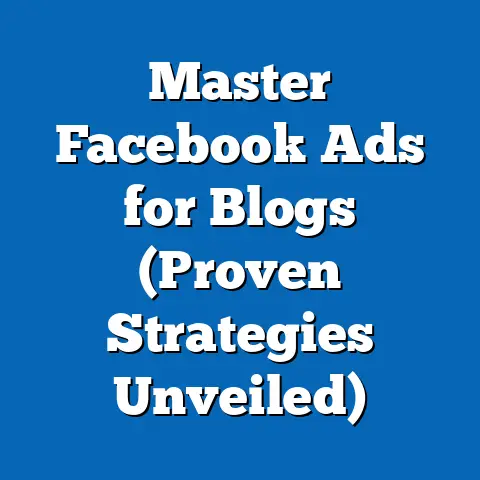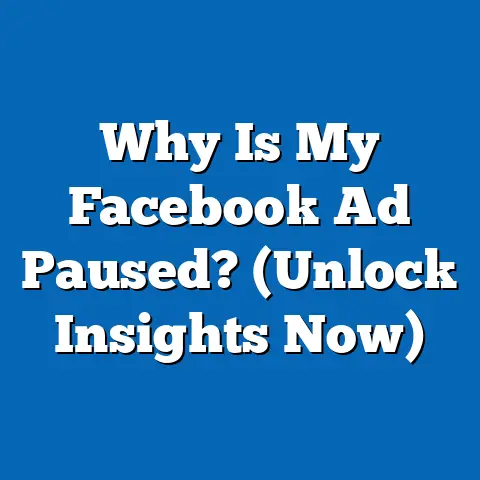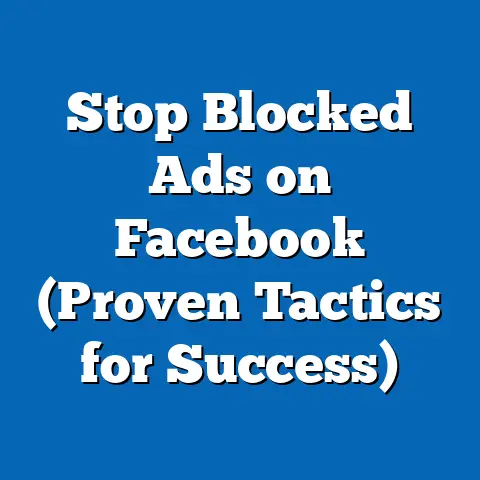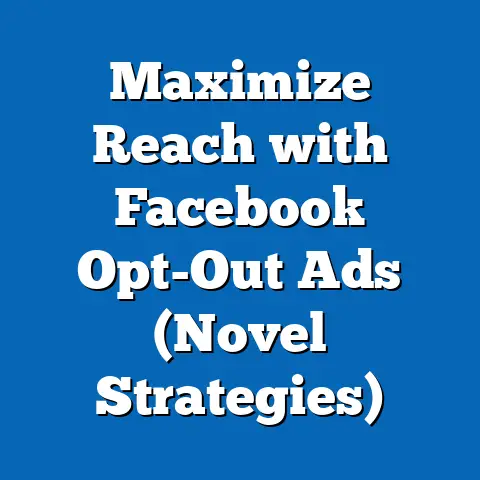Boost Sales with Engaging Facebook Ad Comments (Pro Tips)
Have you ever scrolled through your Facebook feed and stumbled upon an ad that felt more like a conversation than a sales pitch? That nostalgic pull of community-driven interaction is at the heart of a powerful, often underutilized marketing strategy: engaging ad comments. In today’s digital landscape, where social media advertising dominates, businesses that master the art of meaningful interaction through Facebook ad comments are reaping significant rewards.
Recent studies reveal that social media advertising spending reached $153 billion globally in 2021, with Facebook accounting for nearly 25% of that market share, according to eMarketer. Furthermore, research from Sprout Social indicates that 64% of consumers want brands to connect with them on a personal level, and ad comments provide a direct avenue for this engagement. This article dives into how businesses can leverage Facebook ad comments to boost sales, backed by data-driven insights, demographic trends, historical comparisons, and actionable pro tips.
We’ll explore key strategies for crafting engaging responses, analyze which demographics respond most to interactive ads, compare historical engagement trends, and project future opportunities in this evolving space. Whether you’re a small business owner or a marketing professional, these insights will equip you to turn casual scrollers into loyal customers.
The Power of Engagement: Why Facebook Ad Comments Matter
Facebook remains a juggernaut in social media advertising, with over 2.9 billion monthly active users as of 2022, per Statista. Ads on the platform are not just about visibility; they’re about fostering connections. A 2021 Hootsuite report found that 54% of consumers are more likely to purchase from a brand that responds to their comments on social media ads.
Why do comments matter so much? Unlike static ad content, comments create a two-way dialogue, building trust and humanizing a brand. According to a study by Edelman, 63% of consumers trust brands more when they respond to feedback publicly, such as in ad comment sections.
This interaction also boosts ad performance through algorithms. Facebook’s algorithm prioritizes content with high engagement, meaning ads with active comment sections are more likely to be shown to a wider audience. Let’s break this down further with data and actionable strategies.
Key Statistical Trends in Facebook Ad Engagement
The numbers paint a clear picture: engagement is a game-changer for Facebook ads. A 2022 report from Socialbakers revealed that ads with active comment engagement saw a 32% higher click-through rate (CTR) compared to those without. Additionally, brands that respond to comments within the first hour achieve a 47% increase in overall engagement, per Sprout Social.
Engagement isn’t just about likes or shares; it’s about meaningful interactions. Data from Buffer shows that 71% of users feel frustrated when brands fail to respond to their queries in ad comments, often leading to a negative perception of the brand. On the flip side, businesses that prioritize quick, personalized responses report a 20% uptick in conversion rates, according to a 2021 HubSpot study.
These stats highlight a critical opportunity. By focusing on ad comments, brands can turn passive viewers into active participants, driving both immediate sales and long-term loyalty.
Demographic Breakdowns: Who Engages Most with Facebook Ad Comments?
Not all demographics interact with Facebook ads in the same way. Understanding who is most likely to engage with comments can help tailor your strategy for maximum impact. Let’s dive into the data.
Age Groups: According to a 2022 Pew Research Center report, users aged 18-34 are the most active on Facebook, making up 38% of the platform’s user base. This group is also the most likely to engage with ad comments, with 62% stating they’ve interacted with a brand via comments, per a Sprout Social survey. Meanwhile, users aged 35-54, while slightly less active (29% of the user base), still show significant engagement, with 48% responding to or commenting on ads.
Gender Differences: Women are more likely to engage with ad comments than men, with a 2021 Statista study showing that 58% of female users have interacted with brands through comments compared to 42% of male users. This trend may be linked to women’s higher usage of social media for community-building and relationship-focused interactions.
Geographic Trends: Engagement also varies by region. In North America, where 74% of internet users are on Facebook (per eMarketer), ad comment engagement is high, with 55% of users interacting with brands. In contrast, regions like Asia-Pacific, with a massive user base of over 1.2 billion, show lower engagement rates (around 38%), possibly due to cultural differences in online interaction or language barriers in ad content.
Income Levels: Higher-income users (earning $75,000+ annually) are 25% more likely to engage with premium or luxury brand ads through comments, according to a 2022 Nielsen report. Meanwhile, middle-income users ($30,000-$74,999) tend to interact more with value-driven or discount-focused ads, often seeking clarification or deals in the comment sections.
These demographic insights underscore the need for targeted ad strategies. For instance, a youthful, trendy brand might focus on quick, witty responses to appeal to the 18-34 age group, while a luxury brand could prioritize personalized, high-touch interactions for affluent users.
Historical Comparisons: How Engagement Has Evolved Over Time
To fully appreciate the importance of Facebook ad comments today, it’s worth looking at how engagement trends have shifted over the past decade. In 2012, when Facebook ads were still relatively new, engagement was largely passive, with likes and shares being the primary metrics. A 2013 study by Socialbakers found that only 12% of users actively commented on ads, and brands rarely responded.
Fast forward to 2017, and the landscape began to change. As Facebook’s algorithm started prioritizing meaningful interactions, comment engagement grew by 45% year-over-year, per a Buffer report. Brands also began to catch on, with 30% more businesses responding to ad comments compared to 2013, according to Hootsuite data.
By 2020, the COVID-19 pandemic accelerated this trend. With more people online—Statista reported a 10% increase in global Facebook usage during lockdowns—comment engagement spiked by 60%. Brands that adapted quickly saw significant gains; a 2021 HubSpot survey noted that businesses with active comment strategies during the pandemic reported a 35% higher customer retention rate compared to pre-2020 levels.
Today, in 2023, comment engagement is no longer optional—it’s a necessity. Over 70% of consumers expect a response to their ad comments within 24 hours, a sharp rise from just 40% in 2015, per Sprout Social. This historical shift shows that engagement is now a core component of social media advertising success.
Pro Tips for Boosting Sales Through Engaging Facebook Ad Comments
Armed with these insights, let’s explore actionable strategies to maximize the impact of your Facebook ad comments. These pro tips are grounded in data and real-world best practices.
1. Respond Quickly and Personally: Timing is everything. A 2022 Sprout Social study found that 79% of consumers expect a response within the first 12 hours of commenting on an ad. Use automated tools like chatbots for initial responses, but follow up with personalized replies to build trust.
2. Encourage Questions and Feedback: Prompt users to comment by asking open-ended questions in your ad copy, such as “What’s your favorite feature of this product?” Data from Buffer shows that ads with question-based captions see a 50% higher comment rate. This not only boosts engagement but also provides valuable customer insights.
3. Address Concerns Publicly: Negative comments can be a goldmine if handled well. A 2021 Edelman report found that 68% of consumers trust brands more when they address criticism transparently in comment sections. Apologize sincerely, offer solutions, and turn detractors into advocates.
4. Use Humor and Relatability: Especially for younger demographics (18-34), a lighthearted tone can work wonders. A 2022 Socialbakers analysis showed that ads with humorous or meme-based comment responses saw a 40% higher engagement rate. Just ensure the humor aligns with your brand voice.
5. Leverage User-Generated Content (UGC): Encourage users to share their experiences in the comments, then highlight those stories in your responses or future ads. Hootsuite data indicates that brands featuring UGC in their comment interactions see a 25% increase in trust and a 30% boost in sales conversions.
6. Monitor and Analyze Performance: Use tools like Facebook Insights to track comment engagement metrics. Focus on response rates, sentiment (positive vs. negative comments), and conversion tracking. A 2021 HubSpot report found that brands that regularly analyze ad comment data improve their ROI by 18% on average.
Visual Reference: Imagine a line chart here showing the rise in comment engagement from 2012 to 2023, with key spikes in 2017 (algorithm changes) and 2020 (pandemic-driven usage). This visual would underscore the growing importance of comments over time.
These strategies, when implemented consistently, can transform your Facebook ad comment sections into dynamic sales drivers. The key is to prioritize authentic interaction over robotic responses.
Contextual Factors Driving Engagement Trends
Several external factors influence why and how users engage with Facebook ad comments. Understanding these contexts can refine your approach.
Cultural Shifts: The rise of social media as a primary communication tool has made users expect brands to act like friends, not faceless entities. A 2022 Nielsen study found that 66% of global consumers value “human” interactions with brands, a trend amplified by younger generations like Gen Z.
Technological Advances: Features like Facebook’s automated comment moderation tools and AI-driven response suggestions have made it easier for brands to manage high comment volumes. Statista reports that 40% of businesses now use such tools, up from just 15% in 2018.
Economic Factors: During economic downturns, users often turn to ad comments to seek deals or discounts. A 2021 eMarketer survey noted a 22% increase in deal-seeking comments during periods of inflation, suggesting brands should highlight promotions in responses.
Platform Policies: Facebook’s ever-changing algorithm continues to prioritize engagement. Updates in 2021 further emphasized “meaningful interactions,” per a Meta press release, meaning brands ignoring comments risk lower ad visibility.
These factors remind us that engagement isn’t static—it evolves with societal, technological, and economic currents. Staying adaptable is crucial.
Future Projections: The Next Frontier of Facebook Ad Comments
Looking ahead, the role of Facebook ad comments in driving sales is only set to grow. Experts predict that by 2025, social media ad spending will surpass $200 billion, with Facebook maintaining a significant share, per eMarketer forecasts. Engagement will remain a key differentiator.
AI and Automation: The use of AI in comment management is expected to rise, with 60% of brands projected to adopt AI tools by 2024, according to a Gartner report. This will allow for faster, more personalized responses at scale, though human oversight will remain essential for authenticity.
Video and Live Content: Comments on video ads and live streams are projected to see a 35% growth in engagement by 2025, per a Socialbakers forecast. Brands that integrate comment strategies into live events or interactive video content will likely see higher conversions.
Demographic Shifts: As Gen Z becomes a larger portion of the consumer base—projected to account for 40% of global consumers by 2030, per Bloomberg—brands must adapt to their preference for authentic, value-driven interactions. A 2022 Pew Research study predicts that this demographic will prioritize brands that engage transparently in comment sections.
Privacy and Trust: With increasing scrutiny on data privacy, Meta is expected to roll out more user-controlled ad settings by 2024, per industry analysts at Forrester. Brands that build trust through genuine comment engagement will stand out in an era of skepticism.
Visual Reference: Envision a bar chart projecting the growth of AI-driven comment tools (2023-2025) alongside the rise in video ad comment engagement. This would visually reinforce the dual trends shaping the future.
The implications are clear: businesses that invest in comment engagement now will be well-positioned for the future. Ignoring this space risks falling behind as competitors capitalize on evolving consumer expectations.
Conclusion: Turning Comments into Conversions
Facebook ad comments are more than just a footnote in your marketing strategy—they’re a powerful tool to boost sales and build lasting customer relationships. From the 32% higher CTR for engaged ads to the 47% engagement boost from timely responses, the data is undeniable. Demographic insights reveal key audiences to target, while historical trends show how far we’ve come from passive likes to active conversations.
By implementing pro tips like quick responses, humor, and UGC, and by staying attuned to contextual factors, brands can transform their comment sections into sales engines. Looking ahead, innovations in AI, video content, and shifting demographics promise even greater opportunities for those willing to adapt.
So, the next time you launch a Facebook ad, don’t just post and pray—engage, connect, and convert. Your comment section might just be the key to unlocking your next big sales surge.


